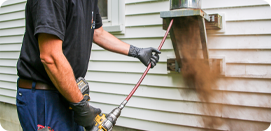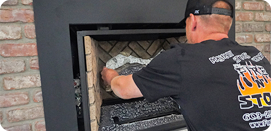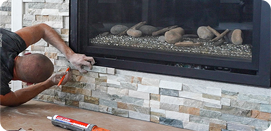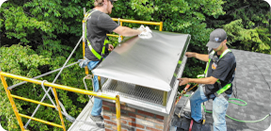What is Creosote Buildup and How to Avoid It
If you own a fireplace and use it regularly, creosote is a problem that you must address as soon as possible because it can compromise your chimney and fireplace efficiency and put your home at risk of a fire. In this post, we look at what creosote is, why it’s so dangerous, and what you can do about it.
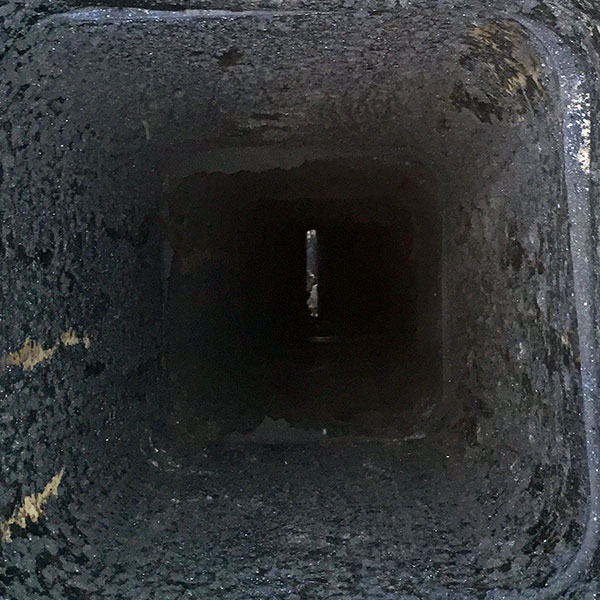 What Is Creosote
What Is Creosote
Creosote is a byproduct from burning fossil fuels like wood. Ideally, firewood should burn completely, but that rarely happens due to poor airflow or unseasoned wood. When the oils in the wood don’t burn completely, they release volatile compounds that travel up the chimney with the smoke. The smoke cools as it rises, condenses with water, and forms the substance called creosote along the chimney’s interior walls.
Creosote buildup happens in three stages:
Stage 1: Creosote begins as a flaky deposit that’s easy to clean with a sturdy brush.
Stage 2: If you don’t clear away the buildup in the first stage, the creosote becomes a sticky, tar-like deposit.
Stage 3: In its final stage, creosote hardness into a shiny, wax-like substance.
Creosote Dangers
It’s easy to dismiss creosote, thinking it means nothing more than that your chimney is dirty, but it’s extremely dangerous. First, as this substance thickens in the flue, it restricts airflow, causing your fire to burn inefficiently. Second, creosote is corrosive and will damage your flue liner over time. However, the primary concern is its flammability. Creosote is formed from unburned wood particles and if the temperature in the chimney gets high enough, the creosote can ignite and cause a fire. And the temperatures don’t have to be that high to cause a disaster. According to the Chimney Safety Institute of America, “Creosote can ignite at temperatures as low as 451 degrees Fahrenheit. For context, a fire in your fireplace can exceed 450 degrees and even just 1/8 of an inch of creosote buildup is enough to cause a fire.” The fact is that most chimney fires are caused by a dirty chimney, so it’s crucial that you keep your flue clean and free from all obstructions, including creosote.
Signs You Have a Creosote Problem
Creosote is a natural byproduct of burning wood, and it’s almost impossible to prevent it, which is why it’s a good practice to hire a professional chimney sweep for annual cleaning. If you’re not in the habit of doing that, there are signs to watch for that indicate you have a creosote problem.
Drafting Problems
Have you noticed that your fire isn’t burning as strongly as before? Is it more difficult to keep your fire going? As mentioned, as creosote builds up, it decreases the diameter of the flue liner, reducing airflow, which impedes your fireplace performance.
Poorly Burning Fire
Another side effect of creosote buildup in the flue is a fire that doesn’t burn hot enough or produces more smoke than usual.
Visible Dirt
As the creosote layer thickens, it becomes a wax-like substance that can drip down into your fireplace as you burn a fire. If you notice an unusual amount of soot or debris in the firebox, it’s a sure sign you have a creosote issue.
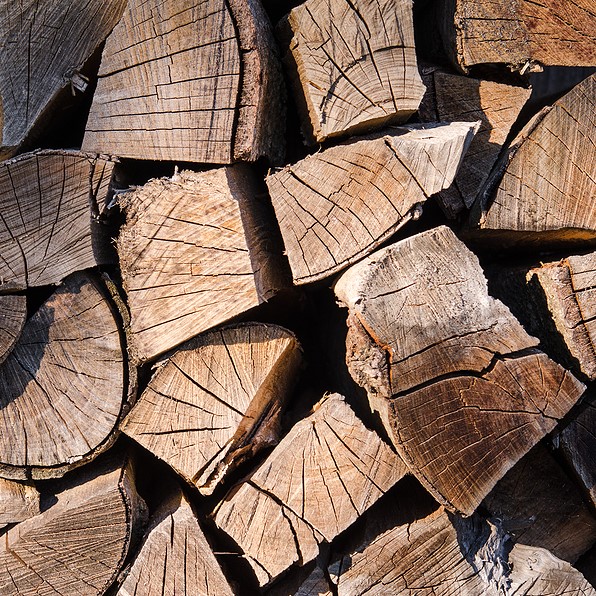
Preventing Creosote Buildup
As mentioned, creosote is a natural byproduct of burning firewood, and it’s nearly impossible to prevent it completely; however, there are steps you can take to minimize its effects.
Burn Seasoned Firewood
To reduce the amount of creosote and get a more efficient fire, experts recommend that you only burn dry, seasoned firewood. Freshly cut firewood contains too much moisture, which makes it more difficult to burn and produces more smoke. More smoke means an increase in creosote buildup. It’s best to allow firewood to dry out for at least six months before using it.
Stay Away From Artificial Logs
Some people think using artificial logs are better for the environment and their fireplace, but the opposite is true. Most artificial logs produce more smoke and combustion byproducts than natural firewood, which significantly increases the likelihood of creosote becoming a problem.
Learn How to Build a Fire
The key to making a healthy, efficient fire is stacking the wood properly. Make sure you leave enough space between the logs for oxygen to circulate and improve combustion. Better combustion means less smoke and less creosote.
Reduce Condensation in the Flue
The combustion byproducts from burning firewood become a concern when they encounter condensation in the flue. When the flue is cold, there’s more condensation and a greater chance for the creosote to stick to the walls. Use rolled up newspaper or other material to make a torch and hold in up the chimney for a few minutes before building your fire to prep the flue and reduce condensation.
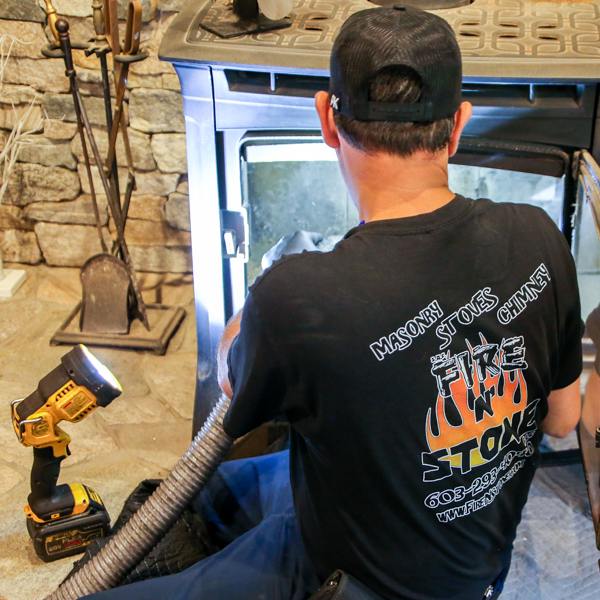 Hire a Pro
Hire a Pro
Finally, the best way to prevent creosote from becoming a dangerous problem is to hire a certified chimney professional for annual cleaning and maintenance. The National Fire Prevention Association recommends having your chimney cleaned at least once a year to reduce the chances of a fire and spot potential issues that can compromise your chimney’s structural integrity or put your family at risk.
Fire N’ Stone is a full-service stove shop, custom stone and chimney service business located in Central New Hampshire. We’re family owned and operated and have over 13 years of industry experience. Our technicians are fully trained, certified, and insured to give you the highest quality results that you can count on. Whether you need a simple chimney sweep, a new chimney liner, a complete chimney rebuild or a new fireplace or stove, our experts work with you from start to finish and guarantee your satisfaction.
Contact us today to book an appointment at 603-293-4040 or visit our showroom at 539 Laconia Rd., Tilton, NH.


